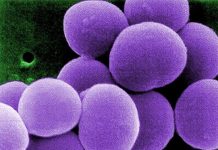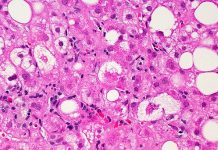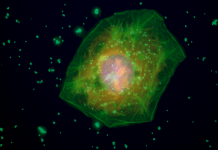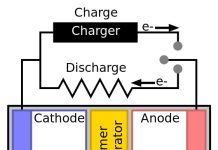A new study shows an innovative method to tackle food allergy in mice by tricking the immune system into avoiding giving out an allergic reaction response
An allergy is when our immune system reacts to a foreign substance -called an allergen – by treating it as an invader and generating chemicals to defend the body from it. The immune response of the body here is called an allergic reaction. The allergen could be either a food item, something we inhale, inject into our body or simply make contact with via touch. Allergy is the reaction that occurs and it could be coughing, sneezing, itchy eyes, a runny nose and a scratchy throat. In very severe case allergy can also cause rashes, hives, low blood pressure, breathing trouble, asthma attacks and even death. Such allergic diseases are affecting the lives of more than one billion people worldwide and the prevalence of allergy is expected to reach up to four billion by 2050. Allergy affects not only individuals but also has a major socioeconomic impact because of health care and loss of productivity. Till date no cure is available for allergies and they can be managed only by prevention and treatment of the symptoms. Globally, it is a common disease but is generally overlooked. Different types of allergies like food allergy, sinusitis (allergic reaction in sinuses), drug, insect, general allergies all constitute to the direct and indirect costs in an economy while significantly affecting the life of the sufferers. Since no straightforward cure is available, the impact of allergies is greater and there is need to fully understand the diseasemechanisms, prevention and patient care to deal with allergies.
Food allergy is a medical condition in which exposure to a particular food item triggers a harmful immune response (or allergic reaction) in the bodybecause the immune system attacks proteins (the allergen in these types of allergy) in the food that are normally harmless and are not the enemy. The symptoms of an allergic reaction to food can range from mild (itchy mouth, a few hives) to severe (throat tightening, difficulty breathing).Also, anaphylaxis is a serious allergic reaction that takes place suddenly and can cause death.A total of 170 foods, most of them harmless, have been reported till date to cause allergic reactions with the major food allergens being milk, egg, peanut, wheat, soyand shellfish. Food allergy is one of the most devastating types of allergies requiring considerable time to manage and constant vigilance in patients especiallychildren in whom food allergies are seen to be extremely common. The only way to manage a food allergy is to firstlywatch out and avoid consuming the food that causes problemsand secondly, by learning to recognize and treat allergic reactions symptoms.This tends to pose a burden for both the food-allergic individual and his or her caregiver affecting their quality of life. Most food-related symptoms occur within two hours of ingestion; often they start within minutes and thus have to be managed very carefully. This leads to many changes like planned meal preparation, social activity, anxiety issues etc. Also, symptoms caused by a food allergy can range from mild to life-threatening and unfortunately the severity of each reaction is unpredictable. Lot of research is happening to resolve food allergy condition and maybe even prevent them;however, most food allergy therapies are under study in clinical trials and none have been proven yet for general use.
A recent innovative study has revealed a new way of treating food allergies by simply “teaching our immune system a new trick”. In this study published in Journal of Allergy and Clinical Immunology, researchers used mice bred to have a food allergy from peanut, and “reprogrammed” the mice’s immune system such that the body did not express a life-threatening reaction to peanut exposure. Peanuts are among the most common food allergen and if consumed, theycan trigger a life-threatening immune response. Since peanuts are common, people have to be extremely vigilant intheir everyday food choices. The authors from Duke-NUS Medical School in Singapore, say that their study is a unique way to treat peanut food allergy. Before this study, other approaches like desensitization–i.e. effectively treating or gradually desensitizing people allergic to peanut – have been carried out which have been labeled as time-consuming and also risky. Their long-term efficacy is also questionable and such therapies are yet to be officially approved for treatment.
An allergic reaction in the body basically results from an imbalance of important messages between cells (which are called cytokines). The authors focused on the Th2-type cytokine immune response. In this context it was understood that whenever anexpected (or appropriate) immune response occurred, Th2 cells worked in tandem with another Th1 cells. On the other hand, when an unexpected immune response occurred i.e. an allergic reaction occurred, Th2 cell was overproduced while the Th1 cells were completely gone. Thus, it was clear that it’s here that the imbalance was happening during an allergic reaction to peanut. Based upon this observation researchers found a simplistic approach towards restoring the balance by delivering Th1-type cells before the person comes in contact with the allergen. The idea was not to have the imbalance to take place, hence avoiding the allergic reaction. In peanut-allergy mice, researchers delivered nanoparticles (which carried Th1-type cells) into the skin to the lymph nodes (which is the place where immune cells are produced). These nanoparticles travelled into the body, delivered their cargo -Th1-type cells- at the origin point of the immune response and completed the desired task assigned to them. The animals which received this manual “therapy” did not show the acute allergic response when they were subsequently exposed to peanuts. Interestingly, this new tolerance was seen to be long-lasting, effective and only one dosage was enough for any subsequent exposure to the allergen. Therefore, this scenario is said to be a “re-education” (a better word for “tricking”) of the immune system, telling it that the allergic reaction response is not the suitable one and it should be not done.
These studies are conducted on mice, however suitable human studies need to be completed before broader application can be assumed. It does come with multiple challenges, for example the authors themselves were unable to use this approach for asthma therapy as a massive dose of cells was required for the lungs and it turned out to be ineffective. This approach could be applied in a similar manner to other food allergens like milk or egg for example and also to other allergens like environmental triggers including dust and pollen. This study does raise hope for preventing allergic reaction to peanut and other allergens by intervening a typical path followed by the body’s immune system. This could be a boon to tackle food allergies which are seen to be plaguing adults and children with no efficient prevention or even a treatment strategy in sight
***
{You may read the original research paper by clicking the DOI link given below in the list of cited source(s)}
Source(s)
St. John AL et al 2018. Reprograming Immunity to Food Allergen. Journal of Allergy and Clinical Immunology. https://doi.org/10.1016/j.jaci.2018.01.020






































